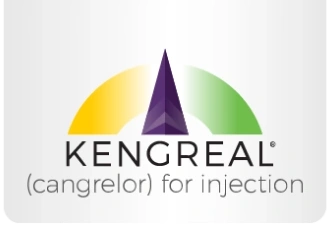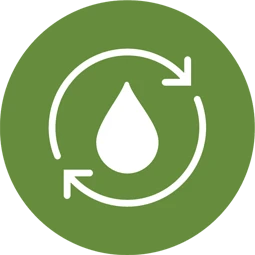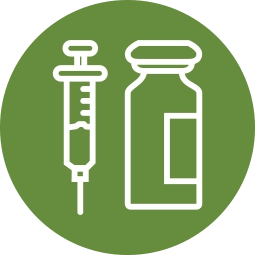Educational Resources for Clinicians
These resources provide insight into why and how to use KENGREAL® (cangrelor) in PCI cases.
KENGREAL video resources
KENGREAL Dosing & Administration
Learn how to prepare (reconstitute and dilute) and dose KENGREAL.

Hello, my name is Tiffany. I’m a registered nurse in the adult cardiac cath lab. This video will demonstrate the procedure to prepare and administer KENGREAL, cangrelor, for injection as presented in the KENGREAL full prescribing information. Indication: KENGREAL is a P2Y12 platelet inhibitor indicated as an adjunct to percutaneous coronary intervention, or PCI, to reduce the risk of periprocedural myocardial infarction, MI, repeat coronary revascularization in stent thrombosis, ST, in patients who have not been treated with a P2Y12 platelet inhibitor and are not being given a glycoprotein IIb/IIIa inhibitor. Important safety information: KENGREAL is contraindicated in patients with significant active bleeding. KENGREAL is contraindicated in patients with known hypersensitivity. Example, anaphylaxis to KENGREAL or any component of the product. Drugs that inhibit platelet P2Y12 function, including KENGREAL, increase risk of bleeding. In CHAMPION PHOENIX, bleeding events of all severities were more common with KENGREAL than with clopidogrel. Bleeding complications with KENGREAL were consistent across a variety of clinically important subgroups. Once KENGREAL is discontinued, there is no antiplatelet effect after an hour. The most common adverse reaction is bleeding. Instructions: use a clean surface to reconstitute KENGREAL, wash hands and don gloves. Use alcohol pad to wipe top of KENGREAL vial and port of 250-mL normal saline or dextrose 5% bag before each needle insertion. Preparation: KENGREAL is intended for IV administration as a bolus and an infusion after reconstitution and dilution. For each 50-mg vial, reconstitute by adding 5 mL of sterile water for injection. Swirl gently until all material is dissolved. Avoid vigorous mixing, allow any foam to settle, ensure that the contents of the vial are fully dissolved, and the reconstituted material is a clear, colorless to pale yellow solution. Reconstitute the vial prior to dilution in a bag. Parenteral drug products should be inspected visually for particulate matter after reconstitution. Do not use without dilution. Before administration, each reconstituted vial must be diluted further with normal saline, sodium chloride injection, 0.9% USP or 5% dextrose injection USP. Withdraw the contents from one reconstituted vial and add to one 250-mL saline or dextrose bag. Mix the bag thoroughly. This dilution will result in a concentration of 200 mcg per milliliter and should be sufficient for at least 2 hours of dosing. Patients 100 kg and over will require a minimum of 2 bags. Reconstituted KENGREAL should be diluted immediately. Diluted KENGREAL is stable for up to 12 hours in 5% dextrose injection and 24 hours in normal saline at room temperature, discard any unused portion of reconstituted solution remaining in the vial. Recommended dosing: The recommended dosage of KENGREAL is a 30 mcg per kilogram IV bolus followed immediately by a 4 mcg per kilogram per minute IV infusion. Initiate the bolus infusion prior to PCI. The maintenance infusion should ordinarily be continued for at least 2 hours or for the duration of PCI, whichever is longer. Administration of bolus and infusion: administer KENGREAL via a dedicated IV line. Step 1: bolus. Remove the bolus dose from the diluted solution, never from the reconstituted vial. Administer the bolus volume rapidly less than 1 minute from the diluted bag via manual IV push or pump. Ensure the bolus is completely administered before the start of PCI. Step 2: infusion. Begin infusion immediately after the bolus and continue for at least two hours or for the duration of PCI, whichever is longer. This concludes our presentation on the KENGREAL dosing and administration instructions. Please see the full prescribing information link on this page. Thank you for watching.
What Happens When a Plaque Ruptures?
Understanding platelet cascade
See the events that can lead to a thrombus formation: platelet activation and adhesion to injury site, amplification of response, and aggregation.

Plaque rupture accounts for up to 75% of all coronary thrombotic events and averting the evolution of a plaque rupture to the formation of a thrombus during PCI, is critical. In this video, we will explore the dynamics of the thrombotic cascade following plaque rupture and assess maintaining the inhibition of platelet activation during PCI as a vital intervention within this cascade.
Thrombosis and the events leading up to it form a complex and dynamic process, with platelets playing a pivotal role. Following plaque rupture, the intricate interplay between the exposed plaque components and receptors eventually leads to platelet activation, adhesion to the site of injury, amplification of response, and aggregation, which can lead to the subsequent formation of a thrombus. Plaque rupture can occur spontaneously, which can lead to an acute coronary syndrome. Iatrogenic plaque rupture can also occur during PCI, leading to thrombosis and potential complications.
Let’s review the thrombotic cascade from plaque rupture to thrombus formation, to better understand the role of antithrombotic agents in this process. We’ll start by looking at the structure of a mature plaque, which consists of a lipid core, separated from the vessel lumen by a cap made of collagen.
A rupture of this mature plaque exposes the lipid rich, thrombogenic core to the bloodstream. This triggers a cascade. Let’s look at the early stages of thrombus formation at the site of the plaque rupture.
Both the vascular injury and the components exposed by this blood vessel wall damage can activate platelets. Active tissue factors are expressed by smooth muscle and adventitial cells. The interactions of platelet surface receptors with collagen and von Willebrand factor contribute to the coagulation cascade and platelet activation and adhesion. During the process, platelets undergo a subsequent morphological change that facilitates their adhesion to the plaque rupture site. The activated platelets release thrombogenic factors, including thromboxane A2 and adenosine diphosphate, or ADP, which bind to their corresponding platelet surface receptors. This process further promotes platelet recruitment and activation. Thrombin not only amplifies the activation process; it plays various crucial roles throughout the complex process of thrombus formation and the thrombotic cascade. Thrombin is generated as a result of events triggered by the exposure of tissue factors, and later in a chain reaction of events, it converts circulating fibrinogen to fibrin and then binds to fibrin to be incorporated into the growing clot. This diagram shows how platelet activation and the coagulation cascade work together toward hemostasis, but it also shows how both can contribute to a growing thrombus.
Another important aspect of thrombus formation occurs when glycoprotein IIb/IIIa receptors undergo a conformational change on the activated platelet, which increases ligand affinity towards von Willebrand factor and fibrinogen. Von Willebrand factor plays a major role in initiating aggregation while fibrinogen and fibrin stabilize the formed aggregate. Platelet aggregation through interplatelet bridge formation is a crucial mechanism for establishing hemostasis in response to a plaque rupture. However, while this process initially prevents excessive bleeding and maintains hemostasis, it can also be a contributing factor in the progression towards thrombosis.
All of the processes in the cascade attract new platelets and other circulating cells to the site of injury in combination with thrombin-mediated fibrinogen conversion to fibrin, promoting thrombus stabilization and enlargement.
Eventually, the acute occlusive coronary thrombus growth can cause an acute myocardial infarction or a thrombotic complication during PCI.
Thrombus formation following a plaque rupture is a dynamic and intricate process, far from a straightforward, linear progression. Rather, it unfolds as a cascade of events, with numerous factors coming into play.
Understanding these events is pivotal when it comes to selecting a drug therapy. Antithrombotic therapies are used to treat and minimize the risks of thrombosis in ACS and PCI. These therapies are strategically designed to target specific components of the intricate thrombotic cascade.
The diagram shown here is for illustrative purposes only and is not intended for comparison of clinical outcomes.
Aspirin irreversibly inhibits COX-1, thus preventing the production of TXA2. P2Y12 inhibitors work by binding to the P2Y12 receptor on platelets and inhibiting ADP signaling. Blocking these receptors prevents further platelet activation, amplification, and aggregation. Agents in this class can reversibly or irreversibly inhibit the P2Y12 receptor. Antithrombin agents selectively target thrombin-induced platelet activation, which is the most potent pathway in platelet activation.
Lastly, glycoprotein IIb/IIIa receptors are abundant on the platelet surface. Glycoprotein IIb/IIIa inhibitors target the step that leads to platelet aggregation and thrombosis by preventing the formation of interplatelet bridges and aggregates.
The combination of antithrombin and antiplatelet agents reduces the risk of both clot formation and platelet aggregation, contributing to comprehensive protection against thrombotic complications associated with PCI procedures.
According to the latest 2021 ACC/AHA/SCAI guidelines for coronary revascularization, experts recommend aspirin, a P2Y12 inhibitor, and an antithrombin agent for all patients undergoing PCI.
Notably, KENGREAL, or cangrelor, is an intravenous P2Y12 inhibitor.
This video describes the effect of KENGREAL on the thrombotic response to laser-induced injury in an in vivo animal model.
Note that the information featured here includes in vivo data, the clinical significance of which has not been established. On the left side, we can see in real time the rapid formation of a platelet-rich thrombus. On the right side, the same experiment is performed, but with cangrelor introduced into the system.
With cangrelor, initial hemostasis is achieved, and we don’t see the formation of a fully occluding thrombus.
To summarize, thrombus formation following a plaque rupture is a dynamic and intricate process, far from a straightforward, linear progression. Maintaining platelet inhibition is vital to reduce the risk of thrombotic events associated with PCI.
Indication
KENGREAL® (cangrelor) for Injection is a P2Y12 platelet inhibitor indicated as an adjunct to percutaneous coronary intervention (PCI) to reduce the risk of periprocedural myocardial infarction (MI), repeat coronary revascularization, and stent thrombosis (ST) in patients who have not been treated with a P2Y12 platelet inhibitor and are not being given a glycoprotein IIb/IIIa inhibitor.
Important Safety Information
KENGREAL® (cangrelor) for Injection is contraindicated in patients with significant active bleeding.
KENGREAL® is contraindicated in patients with known hypersensitivity (e.g., anaphylaxis) to cangrelor or any component of the product.
Drugs that inhibit platelet P2Y12 function, including KENGREAL®, increase the risk of bleeding. In CHAMPION PHOENIX, bleeding events of all severities were more common with KENGREAL® than with clopidogrel. Bleeding complications with KENGREAL® were consistent across a variety of clinically important subgroups. Once KENGREAL® is discontinued, there is no antiplatelet effect after an hour.
The most common adverse reaction is bleeding.
Please see Full Prescribing Information on Kengreal.com.
Scientific studies
Review clinical data from studies assessing the application of KENGREAL in the PCI setting.

CHAMPION PHOENIX pivotal trial
Effect of platelet inhibition on ischemic events during PCI with KENGREAL
See Study
Time to
events
CHAMPION PHOENIX analysis of the reduction of ischemic events with KENGREAL in patients undergoing PCI
See Study
Lesion
complexity
CHAMPION PHOENIX analysis of the benefit of KENGREAL for patients with complex coronary anatomy in PCI
See AnalysisAdditional educational resources

2021 ACC/AHA/SCAI Guideline (PCI)
Coronary Artery Revascularization Recommendations in Patients Undergoing PCI
Go to Guidelines
AHA Scientific Statement: MI & CS
The Invasive Management of Acute Myocardial Infarction Complicated by Cardiogenic Shock
See StatementResources for pharmacists
These materials address specific issues that may be relevant for pharmacists in the clinical setting.
KENGREAL Cost Consequence Model
Intended for healthcare decision makers like cath lab directors, quality personnel, pharmacy administration, and P&T committee members, the Cost Consequence Model (CCM) demonstrates:
- Economic impact of using KENGREAL versus clopidogrel with or without GPIIb/IIIa inhibitor bailout during PCI
- Cost avoidance of ischemic and bleeding events
The CCM is considered health economic and value information, which can be provided to a payor, formulary committee, or other similar entity with knowledge and expertise in the area of healthcare economic analysis, carrying out its responsibilities for the selection of drugs for coverage or reimbursement.
ACC=American College of Cardiology; ACS=acute coronary syndrome; AHA=American Heart Association; IV=intravenous; MI=myocardial infarction; PCI=percutaneous coronary intervention; P&T=Pharmacy & Therapeutics.
Looking for additional resources?
KENGREAL reps can provide a wealth of education and data about the application of KENGREAL in high-risk or complex PCI. Reach out and learn more.
Request a RepImportant Safety Information
KENGREAL® (cangrelor) for Injection is contraindicated in patients with significant active bleeding.
KENGREAL® is contraindicated in patients with known hypersensitivity (e.g., anaphylaxis) to cangrelor or any component of the product.
Drugs that inhibit platelet P2Y12 function, including KENGREAL®, increase the risk of bleeding. In CHAMPION PHOENIX, bleeding events of all severities were more common with KENGREAL® than with clopidogrel. Bleeding complications with KENGREAL® were consistent across a variety of clinically important subgroups. Once KENGREAL® is discontinued, there is no antiplatelet effect after an hour.
The most common adverse reaction is bleeding.
Please see Full Prescribing Information.
Indication
KENGREAL® (cangrelor) for Injection is a P2Y12 platelet inhibitor indicated as an adjunct to percutaneous coronary intervention (PCI) to reduce the risk of periprocedural myocardial infarction (MI), repeat coronary revascularization, and stent thrombosis (ST) in patients who have not been treated with a P2Y12 platelet inhibitor and are not being given a glycoprotein IIb/IIIa inhibitor.





